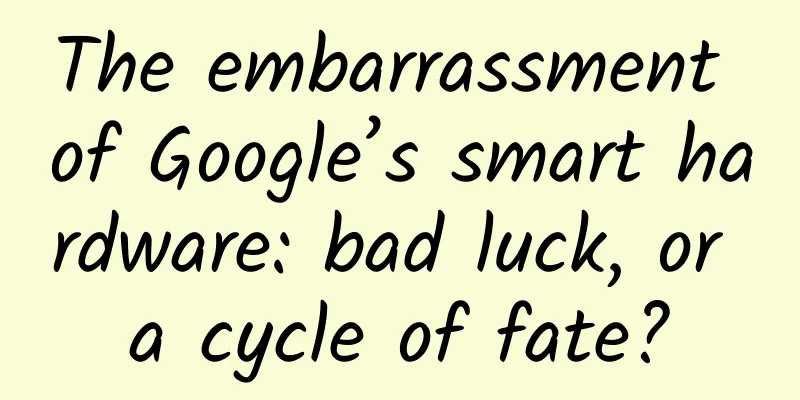How did electric cars get into a fight with apes?

|
Now, there are more and more "new energy vehicles" with green license plates, many of which are electric vehicles. According to the International Energy Agency, there will be 40 million electric vehicles in use worldwide in 2023 , while in 2022, the number was only 26 million. Compared with traditional fuel vehicles, new energy vehicles are generally considered to be more environmentally friendly - there is no exhaust emission, which can reduce air pollution; the greenhouse gas emissions are lower than fuel vehicles; if renewable energy such as wind power and solar energy are used, dependence on fossil fuels can be further reduced. If renewable energy such as wind power can be used, electric cars will be more environmentally friendly | TuChong Creative However, seemingly green new energy vehicles are not perfect. A recent study published in the journal Science Frontiers found that mining activities for the manufacture of car batteries are threatening nearly 180,000 apes in Africa , including chimpanzees, gorillas, bonobos, etc. Mining into the gorillas' home The manufacture of electric vehicle batteries often requires metals such as lithium, cobalt, and nickel. Now, many mining companies have set their sights on Africa - Africa has about 30% of the world's mineral resources, but many have not yet been developed. Currently, less than 5% of the world's mineral development is carried out in Africa. For mining companies, this is simply a treasure trove full of "money power". But this land is also home to many creatures. Africa is rich in biodiversity and is home to a quarter of the world’s mammal species. Apes are among the most threatened, with both eastern and western gorillas listed as “critically endangered” on the IUCN Red List , while chimpanzees and bonobos are “endangered.” Gorillas in Africa | WWF Researchers analyzed mines and mining exploration sites in 17 African countries and found that nearly a third of apes (about 180,000 individuals) are threatened by mining. In West Africa in particular, many mining areas overlap with fragmented ape habitats , including in countries such as Liberia, Sierra Leone, Mali and Guinea. Guinea has more than 23,000 chimpanzees, who are likely to be affected by mining. Mining and ape density distribution, red represents mining, blue represents ape density, the darker the color, the greater the density | Reference [1] Mining’s impact is seriously underestimated The impact of mining activities on wildlife begins during the exploration process. During the exploration phase , a lot of drilling and blasting activities are accompanied by high noise , which will interfere with the communication between primates. The noise is also unbearable for other wild animals, which will damage their hearing system and threaten their survival. The damage during the development phase is more direct. Excavation, blasting and heavy machinery will have a direct impact on the development zone. Deforestation and vegetation destruction will fragment the original intact habitat ; pollutants such as heavy metals and toxic chemicals will pollute the air, water and soil, disrupt the food chain and harm animal health. In addition, there is light pollution. When apes are exposed to artificial light at night, their physiological indicators will be disrupted, reducing their reproductive success rate. Approximate threats within 10km and 50km of mining activities. Red means high risk, yellow means medium to low risk | Reference [1] Beyond the heart of mining, impacts beyond mining boundaries are more difficult to estimate. Once the minerals are mined, they must be transported to ports. Infrastructure development, such as roads or railways, goes hand in hand with mining activities . When the spatial ranges of people and animals overlap more, road kill and zoonotic diseases become more severe. In the researchers' opinion, the threat posed by mining to African apes has been severely underestimated. According to estimates from the IUCN Red List, agriculture and logging are the main threats to primates , while activities such as road and rail construction, oil and gas drilling, and mining threaten only 2% to 13% of primate species. Researchers believe that this figure completely underestimates threats such as mining activities , and this underestimation may be caused by a lack of data on mining sites and the lack of updated data. In Africa, most mines are in the exploration phase, not mining. Exploration itself has an impact on animals , so if only the impact of actual mining is counted, the impact will be lower. In addition, "artisanal" mines are ignored , where mining activities are unregulated and the threats they pose to apes are not counted. While mining companies are often required to conduct environmental impact studies, these studies often do not include biodiversity. Researchers found that 97% of mining sites had no ape survey data . Mining companies share very little ape data—only 1% of the key database of African apes comes from mining companies. And mining companies that conduct environmental assessments often prohibit second or third parties from using the data, which makes the data even less transparent. The cost of moving to clean energy Using clean energy is certainly a better choice for the earth, but as we strive towards a greener future, we need to face the costs and come up with better solutions. Lithium and cobalt are important components of many renewable energy sources , such as solar panels, wind turbines and electric vehicles. But the rush to mine lithium and cobalt has come with concerns about waste, environmental damage and human rights. Most of the world's lithium is mined in salt flats in Australia, Argentina, Bolivia and Chile. To extract lithium, salt water needs to be pumped up from 20 to 40 meters underground and injected into evaporation ponds. The water evaporates for several months before lithium is extracted, which consumes a lot of water resources. It takes about 2.2 million liters of water to produce one ton of lithium . Chile's "lithium field", where evaporation ponds consume 21 million liters of water every day | Tom Hegen Cobalt mining produces harmful tailings and slag that can seep into the environment. Up to 70% of the world’s cobalt is mined in the Democratic Republic of Congo, much of it in unregulated “artisanal” mines where workers’ rights are not protected and many child laborers are only able to use hand tools when mining cobalt . As previous generations of electric vehicles reach the end of their lives, preventing the piles of used batteries from piling up has become a new challenge . Today, many electric vehicles use lithium-ion batteries, which can store more energy in the same space as lead-acid batteries. However, 99% of lead-acid batteries in the United States can be recycled [7], while the recycling rate of lithium-ion batteries is estimated to be only 5% [2][9]. The low recycling rate is related to the immaturity of the recycling process. According to the current process, recycling lithium batteries requires the use of a large amount of water resources or the emission of air pollutants. In the future, when the technology is improved, the proportion of lithium battery recycling can be increased. But during this period, it is likely that a lot of lithium resources will be wasted. Another way to recycle is to use car batteries for other things . A study by the Massachusetts Institute of Technology found that if handled properly, used car batteries can continue to be used as backup storage for solar energy for 10 years or more. Use used car batteries as backup storage for solar energy | MIT News Clean energy technology is the new direction of the future, but as the ape researcher said: "Moving away from fossil fuels is good for the climate, but it must be done in a way that does not endanger biodiversity." In the process of moving towards clean energy, we cannot turn a blind eye to the environment, biodiversity, and unfair trade methods. If we cannot do these, it will not be a more sustainable future. Author: Yellow pollock Editor: Mai Mai This article comes from GuokrNature (ID: GuokrNature) |
>>: Do you really understand colds?
Recommend
Latest research: Garlic can really lower blood lipids and blood sugar, but the premise is...
Recently, a new study has been circulated online,...
How to use IIS to build a website on a VPS server?
For SEO website optimizers, knowing how to build ...
Tips to increase sales 10 times through live streaming!
There are many ways to improve the efficiency of ...
For an Internet finance platform, is a 30% increase in the number of users each month considered "growth"?
What is growth? Any growth that is not aimed at i...
Electric Technology Auto News: Great Wall Motors has repeatedly come up with surprising moves in the fiercely competitive compact SUV market. Can the VV5, which is positioned higher than Haval, successfully break through?
The progress of Chinese brands in recent years is...
Qualcomm: 1Q21 revenue of US$8.235 billion, up 62% year-on-year, lower than expected
On February 4, 2021, Qualcomm (QCOM.US) released ...
Would you still dare to use your iPhone if it has been successfully cracked?
Last week, the most sensational event in the tech...
This comment section is more dangerous than poisonous mushrooms!
Don’t use hallucinogenic mushrooms as medicine! E...
Ajie·How to break the black label of Pinduoduo traffic, the idea of hot selling, Pinduoduo traffic framework, and quickly seize tens of billions of traffic
Ajie·How to break the black label of Pinduoduo tr...
Where is the way out for nine out of ten online variety shows that are star-studded?
As soon as the summer comes, major TV stations an...
Toads used to be listed as one of the "five poisonous animals", but now they are "three protected animals"
In April 2023, a case was published in the newspa...
How to prevent and treat “muscle deficiency”?
Author: Yuan Li, Beijing Longfu Hospital Reviewer...
Is the customization cost of Wuxi Photo Mini Program high? Wuxi photo app customization cost
According to industry insiders, mini programs wil...
How to attract new users and promote activity on Xiaoyuan Kousuan APP
Today's case comes from Xiaowen, an outstandi...
Will eating too much vitamin C cause kidney stones? What should you eat to prevent kidney stones?
Recently a friend asked me about this. I saw a ne...









